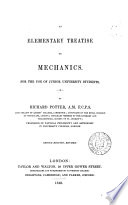 Newton generalized the law of attraction into a statement that every particle of matter in the universe attracts every other particle with a force which varies directly as the product of their masses and inversely as the square of the distance between... Newton generalized the law of attraction into a statement that every particle of matter in the universe attracts every other particle with a force which varies directly as the product of their masses and inversely as the square of the distance between...  A History of the Study of Mathematics at Cambridge - Page 61by Walter William Rouse Ball - 1889 - 264 pagesFull view A History of the Study of Mathematics at Cambridge - Page 61by Walter William Rouse Ball - 1889 - 264 pagesFull view - About this book
 | Nautical astronomy - 1977 - 1412 pages
...within the solar system only : Every particle of matter attracts every other particle with a force that varies directly as the product of their masses and inversely as the square of the distance between them. From these fundamental laws of motion and gravitation, Newton derived Kepler's... | |
 | Richard Potter - Mechanics - 1846 - 190 pages
...earth's surface. Sir Isaac Newton's law of universal gravitation is, that every particle of matter attracts every other particle with a force which varies directly as the mass of the attracting particle, and inversely as the square of the distance. It is also shewn that... | |
 | Richard Potter - 1848 - 196 pages
...earth's surface. Sir Isaac Newton's law of universal gravitation is, that every particle of matter attracts every other particle with a force which varies directly as the mass of the attracting particle, and inversely as the square of the distance. It is also shewn that... | |
 | Perry Fairfax Nursey - Industrial arts - 1855 - 640 pages
...bodies 294 PBOFZSSOR FABADAY ON XAGNETIO PHILOSOPHY, ETC. themselves exert a mutual attraction, varying directly as the product of their masses, and inversely as the square of the distance between their centres of gravity. This is, as we view it, the argument for the law of gravitation... | |
 | Industrial arts - 1855 - 712 pages
...294 PROFESSOR FABADAY OH MAGNETIC PHILOSOPHY, ETC. themselves exert a mutual attraction, \ .iry in;; directly as the product of their masses, and inversely as the square of the distance between their centres of gravity. This is, as we view it, the argument for the law of gravitation... | |
 | Technology - 1855 - 708 pages
...have all to do with the matter, and we say the bodies themselves exert a mutual attraction, varying directly as the product of their masses, and inversely as the square of the distance between their centres of gravity. This is, as we view it, the argument for the Jaw of gravitation... | |
 | Augustus William Smith - Mechanics, Analytic - 1855 - 368 pages
...nature of a force which is constant. The law of Universal Gravitation is, that every particle of matter attracts every other particle with a force which varies directly as the mass of the attracting particle, and inversely as the square of the distance. A sphere of uniform density,... | |
 | Augustus William Smith - Mechanics, Analytic - 1855 - 340 pages
...nature of a force which is constant. The law of Universal Gravitation is, that every particle of matter attracts every other particle with a force which varies directly as the mass of the attracting particle, and inversely as the square of the distance. A sphere of uniform density,... | |
 | Augustus William Smith - Mechanics, Analytic - 1863 - 340 pages
...nature of a force which is constant. The law of Universal Gravitation is, that every particle of matter attracts every other particle with a force which varies directly as the mass of the attracting particle, and inversely as the square of the distance. A sphere of uniform density,... | |
 | Adolphe Ganot - Physics - 1865 - 518 pages
...by NEWTON, may be expressed as follows : Any two bodies exert upon each other a mutual attraction, which varies directly as the product of their masses, and inversely as the square of their distance apart. Effect of Gravitation on the Planets. 35. It is by the influence of gravitation... | |
| |